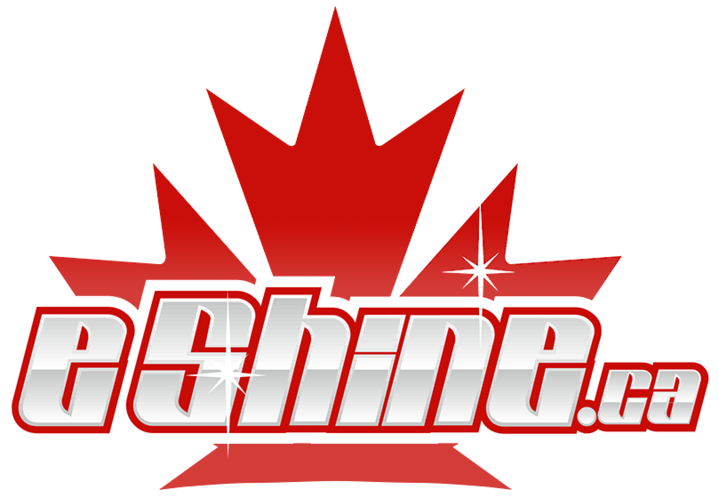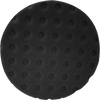
Just starting out in the detailing community? Do you feel that Canadian Tire and Walmart don't have the selection or expertise that you want/need to protect and maintain your paint? I'll bet you've watched a few YouTube videos and are now more confused than ever. Perfect. You found a great website to help you make sense of all that terminology and give recommendations for the products you'll need for every part of your vehicle.
I will list common types of chemicals and their uses below. Hopefully this will help you to navigate through the process of perfecting and maintaining your paint. We will start at the beginning of the exterior, and then move on from there.
Fallout Removers
A fallout cleaner chemically removes metal particles from the paint. You will most often notice the tiny brown spots on a white or light colored car. These spots are often referred to as brake dust, or rail dust. Fallout cleaners, such as CarPro IronX break down and liquefy the metal contaminants. These cleaners are relatively quick to use, and take most metal contaminants out of the paint. Why would you use a clay bar instead? A Claybar will remove all metal contaminants, and will also remove organic contaminants such as over-spray and bug particles.
Fallout Removers:
Claybar Options:
Clay Bars and Clay Bar Substitutes
Clay bars remove contaminants from your paint, but how do you know if your paint is contaminated? If the surface feels rough there are usually contaminants in your paint. Often even brand new cars are full of fallout from transportation. Clay barring a car can take a lot of time. You have to lubricate each section using a clay lube, followed by gliding the clay bar over the affected area. Claybars have a consistency similar to play-dough and you will feel a slight pull as it removes the contaminants from the paint. Often one pass is enough, but several may be needed to remove heavily over sprayed or contaminated cars.
Recently clay mitts and pads have hit the market. These do the same as a traditional clay bar, yet allow for ease of use.
For more information check out our blog: Clay Bar Use
All Purpose Cleaners
All-purpose cleaners are often referred to as APC, or degreasers. An APC is a strong degreaser that removes oils and dirt from surfaces. Most often you would use an APC before polishing and waxing a car. It is also often used on wheels and engine bays. Most all-purpose cleaners are concentrate and can be diluted. With a higher dilution they can be often be used on the interior as well.
No Rinse (NR)
No Rinse (NR) washes were designed for areas with limited water use, such as RV parks, Marina's, Apartment buildings. They have gained popularity in the recent years as there have been several areas with water bans and restrictions. The no-rinse wash is a concentrated soap you would apply with a sponge or foam cannon. The wash, as per the name, does not need to be rinsed. It will dry to leave a streak free surface or can be wiped clean with a quality microfiber towel.
A no rinse product works well on not so dirty cars. If there is heavy mud or debris a traditional car wash is more effective.
Some No-Rinse Options:
Car Wash
A true car or auto wash is safe to use over waxes and sealants. They will not strip the wax or sealant off the car, and will foam to remove dirt and grease.
For more information, check out our Blog: Car Washing
Wash and Wax
Wash and wax is a car wash with added gloss enhancers. Wash and wax shampoos are safe to use on waxed cars, they leave behind some additional short term gloss. This product often has carnauba wax as an ingredient. Store these products at room temperature as freezing may cause separate.
Compound
Compounds are designed to be applied by machine. Compounds are used to remove small scratches and swirls from the finish. Most compounds require the speed and heat produced by a polisher.
Polish
A polish prepares the surface for a wax or sealant. It removes minor swirls, cleans up the paint and makes it shiny. A pure polish does not have any protection in the polish, just cleaners and often fillers. A lot of polishes can be used by hand or machine.
All In One (AIO)
An All in One product refers to polishing abilities, plus protection. These products clean the surface, fill small imperfections, and give some protection to the surface.
Sealant
A sealant is synthetic protection that protects your paint. A true sealant does not have any correction properties and is usually very thin. Most sealants last anywhere from 6 to 18 months. This protection all depends on the product and the environment the vehicle is exposed too.
For more information, check out our Blog: Applying a Sealant
Permanent Coating
A Permanent coating is a coating that changes the paint. Often there are ceramic particles in the paint that harden the paint slightly and help it reduce the frequency of swirls and small marks left from drying and everyday care.
Paste Wax
A wax is mostly a solid that is made from carnauba. The carnauba is blended with other ingredients to make it soft enough to be applied to your vehicle. A wax will give an amazing shine, and will last on average about 3 months. A wax can be applied over a sealant or coating to add to the finish, but is not always necessary.
Quick Detailer (QD)
A quick detailer is a spray wax that is designed to slightly clean the car and add some gloss in between washes. It is in a spray bottle and often can be used on plastics and metals as well.
Still have questions? info@eshine.ca












































